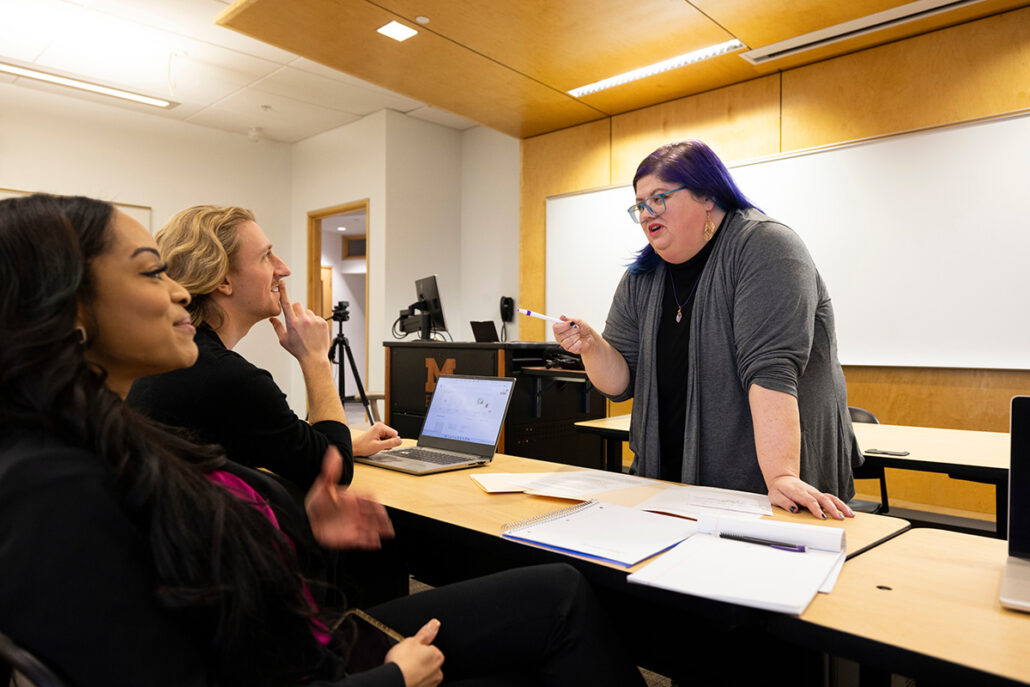Physics Program Announces New STEM Partnership with Springview Elementary
Lindy Beckman’s class at Springview Elementary in Flushing, Michigan, is unique. Made up of 5th and 6th grade students, the class operates with a specific emphasis on STEM (science, technology, engineering, and math) subjects. The class is self-contained, so the students stay together with a single teacher all day, every day. Says Beckman, “The students were selected for the class by teachers and parents for their interest in STEM topics, academic performance, perseverance, and collaboration skills. Although this is our first year of the program, it has been a huge success!” Beckman noted that though the class does have an emphasis on STEM, all the traditional subjects, including social studies and English, are still taught.
In early 2015 Beckman received notice of an available CARE grant from the Greater Flint Education Consortium (GFEC) that would allow her to create a collaborative partnership between her class and a local university. Beckman chose UM-Flint and its Physics Program.
She contacted the Physics Program’s Dr. James Alsup, who enthusiastically agreed to working together.
The learning objectives for the partnership center on physical science and cover Kinetic and Potential Energy, Energy Transfer, and Changes in Matter. Subjects that Alsup and his undergraduate students are well suited to teach.
Alsup said, “My students Patrick Ross and Benjamin Savoie have both chosen physics due to their experiences in school and activities like science fairs. They know the benefit of having a fun, interactive, and inquisitive approach to questions in nature and were happy to provide that for our local classroom.”
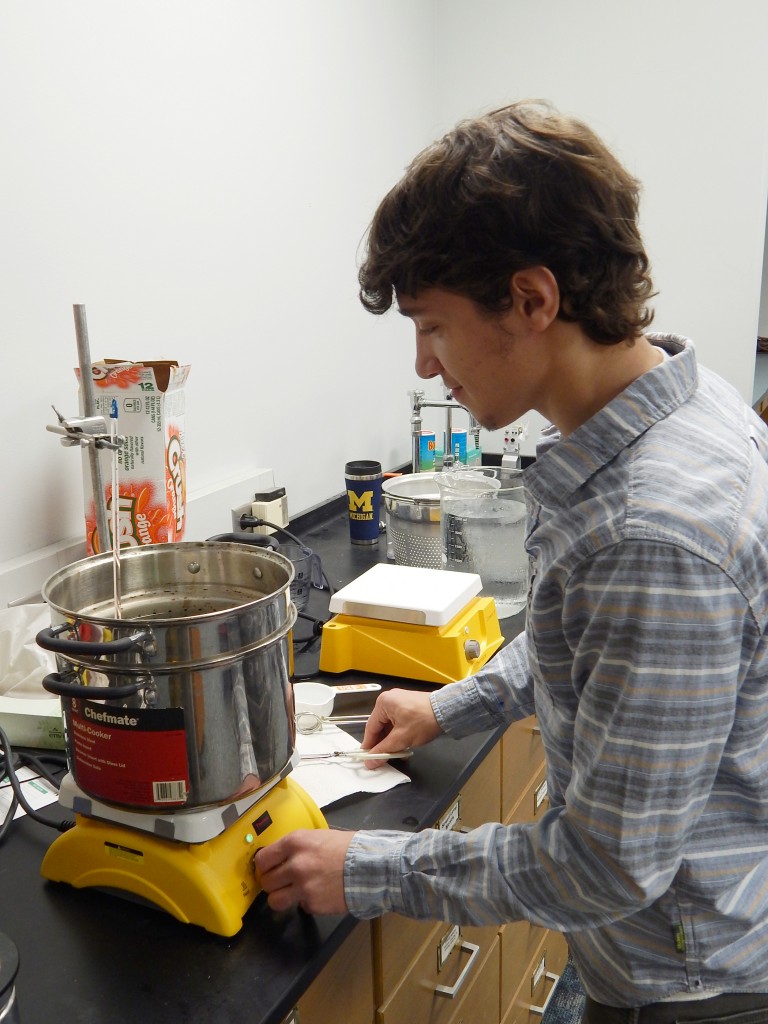
On April 20, 2015, the STEM students arrived at UM-Flint for their first lesson on Energy Transfer.
Savoie and Ross, both UM-Flint Physics majors, had prepared the Zick Active Learning Classroom for the day’s activities. Dr. Alsup welcomed the elementary students as they arranged themselves in groups of four at the lab tables.
Alsup began the day with some slides and questions on states of matter and changes in energy. He was impressed by the students’ existing knowledge and by the myriad questions they asked. His undergrad assistants laughingly began a whiteboard list with the topics covered by student questions: phase changes, quantum physics, meteorology, chemistry, astrophysics, particle physics, textiles, ectoplasmic chambers, and geology.
Said Alsup, “I was unsure of what to expect having a classroom full of 5- and 6th graders. I prepared a short talk, but the class already knew almost all of it. Lindy has done a fantastic job educating them, and the first hour turned into a Q and A session. It was extremely fun. I think that the full session will help cement concepts for the students to view a unified description of matter based on notions of atoms and energy.”
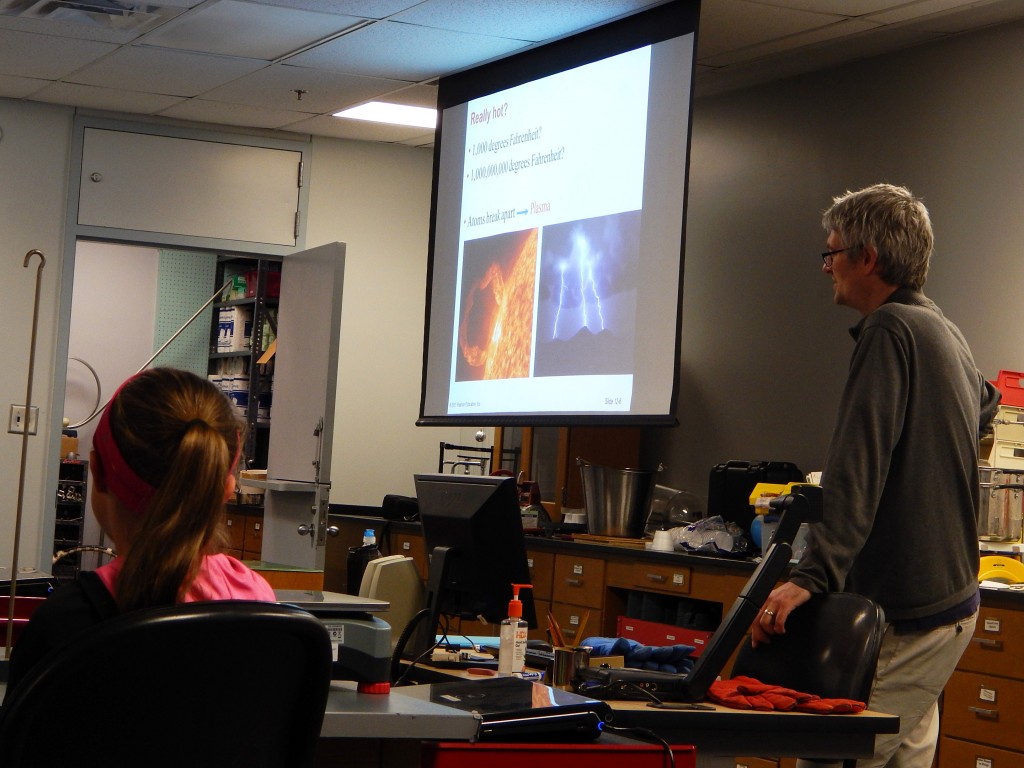
After the slide presentation and the Q and A, the day moved into demonstrations.
The group learned Boyle’s Law, which describes the relationship between volume and the pressure of gasses, when an aluminum can containing a small amount of boiling water was crushed by submerging it in ice water. Alsup deflated balloons by putting them in a bucket of liquid nitrogen and then showed how they inflate again when returned to room temperature. This demo explored Charles’ Law and the relationship between temperature and volume for gasses. State changes were demonstrated by putting liquid nitrogen in a vacuum chamber and using the pressure to both boil and freeze it at different times.
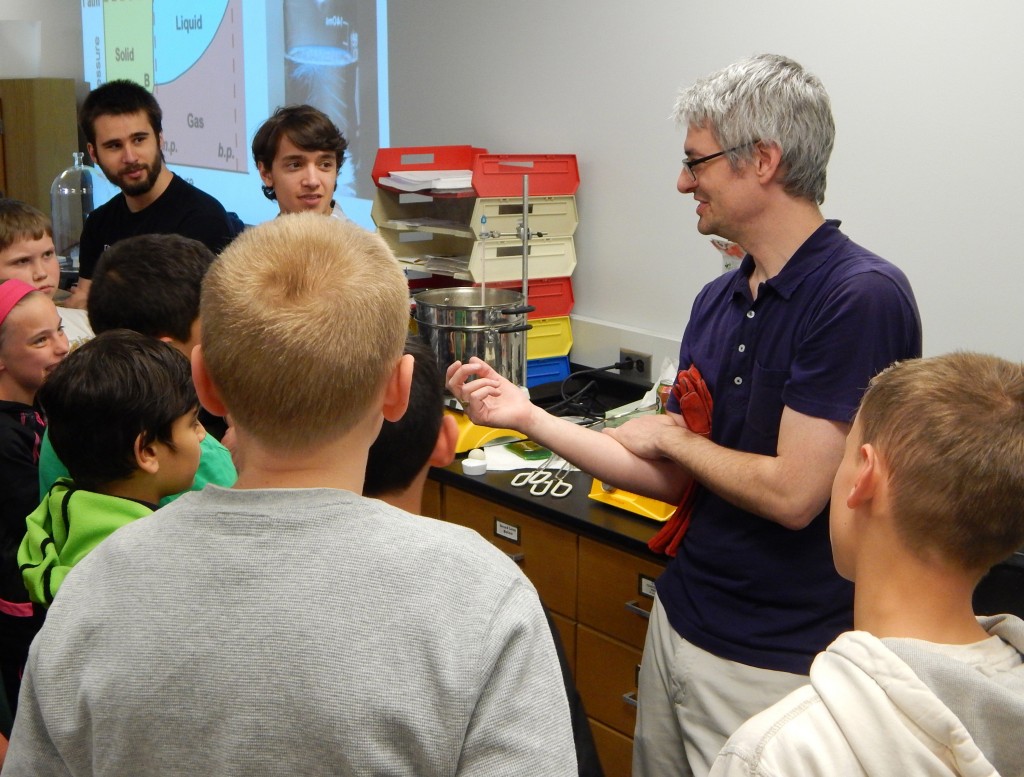
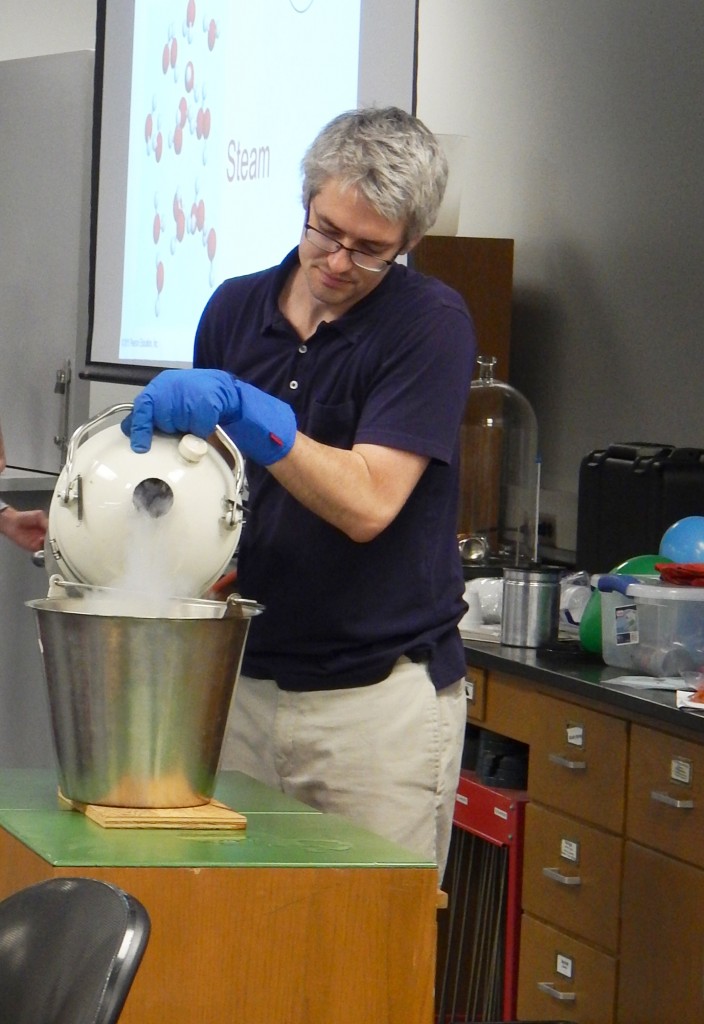
Sitting at their lab tables, the elementary students were given experiment worksheets, a scale, and a calorimeter. After taking down initial calculations, each group was given a piece of hot metal to place in their calorimeter’s water. Using calculations of mass, temperature change, and heat exchange, the students’ final goal was to guess the metal their group had been given.
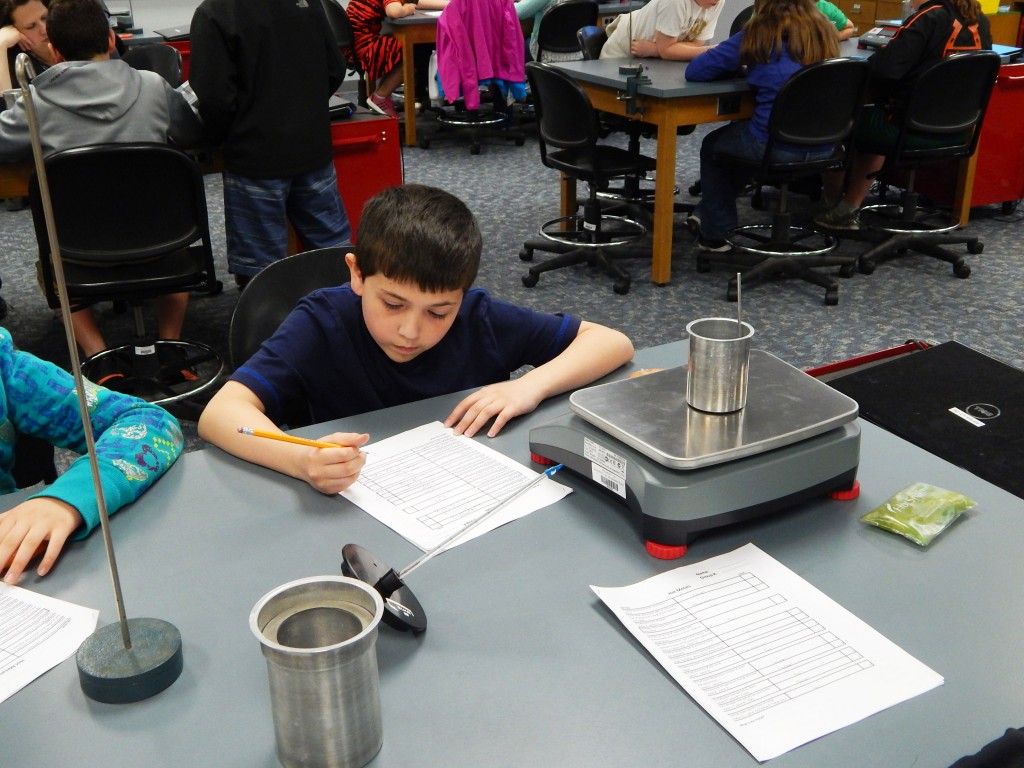
The students worked mostly on their own while Alsup and his students circulated around the room, offering help when it was needed. The activity gave Savoie and Ross a chance to put their own learning into practice as they guided the students through the 13 steps of the experiment.
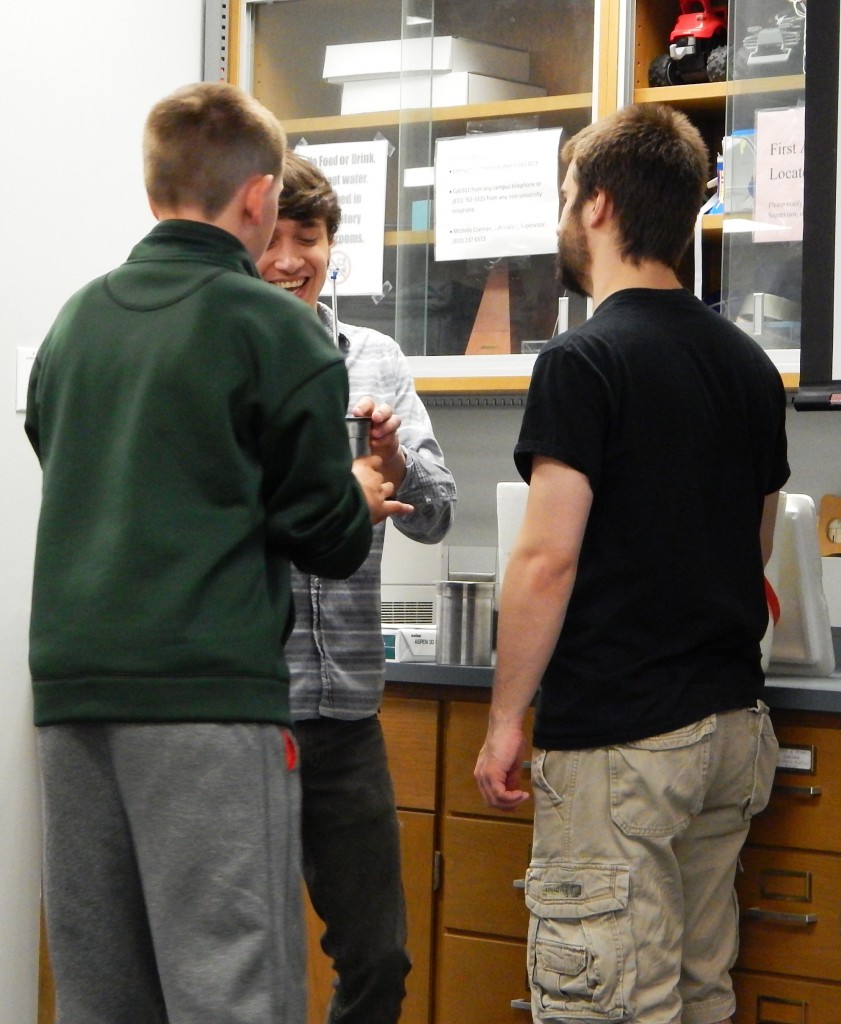
At 2:30pm the Springview students headed back to their bus. They will return to UM-Flint two more times this spring to cover the additional learning objectives. When asked how she felt about the first visit to UM-Flint, Beckman said, “The first session really proved to me the strength of curiosity with this group of students. They loved the demonstrations and ability to ask Dr. Alsup questions.”
When asked what the next sessions will hold, Alsup said, “In the next session, I’m looking forward to introducing a microscopic-view point of matter to let the students see what truly random motion means and how it influences features seen at an everyday scale. Dr. Ganguly, our resident Astronomer, will lead the third session and explain where different phases of matter are found, not just on earth, but out in space.”
For more information on the Physics Program at UM-Flint, visit umflint.edu/CSEP/Physics.
Content from this post may be reprinted in whole or part, as long as credit is given to the UM-Flint College of Arts and Sciences or a link is provided to this blog.
Photo credit: Amy Hartwig, UM-Flint CAS.

